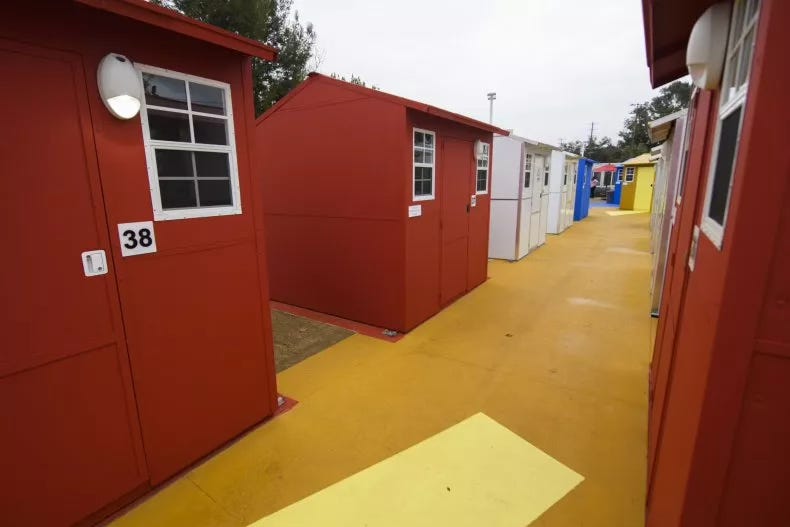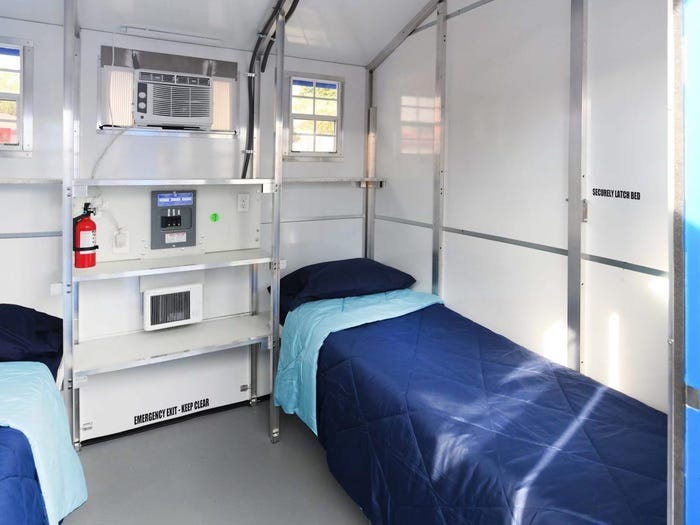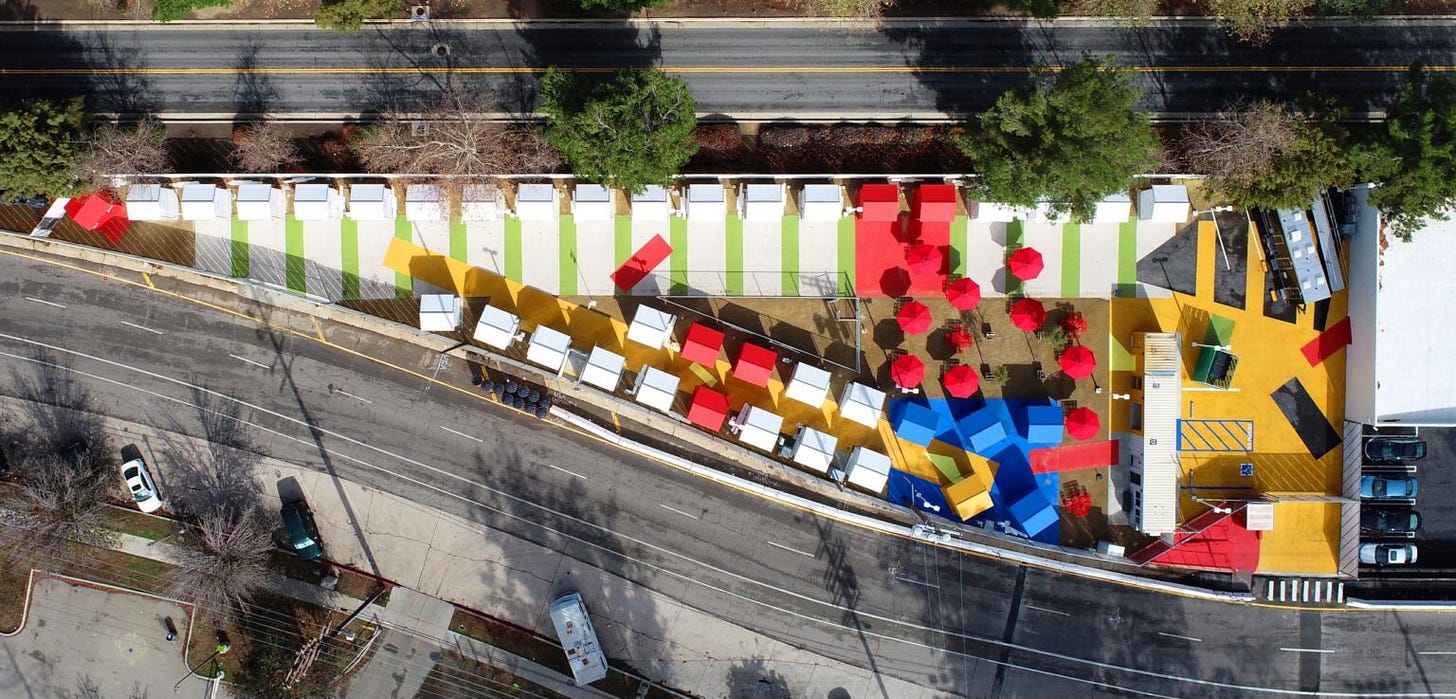What you don’t see in the pre-occupancy photos is the behavior that the homeless will bring with them when they move in….
Behold: the 39-unit Chandler Boulevard Bridge Home Village, designed by Lehrer Architects with the Los Angeles’ Bureau of Engineering. Each tiny home is 64 square feet, about eight by eight feet, and comes with two beds, a heater, air conditioner, and a charging station for phones and devices. Toilets, showers and laundry available in a service pod at the far end of the village. Looks pretty inviting if you’ve been living out on the street. And certainly the 39 (or 78, considering the twin beds) homeless folks who win a shelter assignment at Chandler Bridge, out of Los Angeles’s estimated 66,000-plus homeless population, will be an instant aristocracy among the homeless. Golf claps for good intentions.
What you don’t see in the pre-occupancy photos is the behavior that the homeless will bring with them when they move in. As it happens, the vast majority of the homeless have other problems besides lacking a place to live, chiefly drug addiction and mental illness. Does Chandler Bridge Home Village become a “shooting gallery” for the druggers? And a mental hospital without staff or treatment? You see, it is well-known that concentrating populations with behavior problems tends to amplify the bad behavior. That’s exactly why the high-rise “project” housing of the 1950s and 60s was so disappointing. Guess we’ll have to stand-by and see how it works out. My bet would be that the place is utterly destroyed by its inhabitants inside of a year.
Below is a look inside a tiny house and then a drone-shot of the village layout. Thanks to Michael Lind for the nomination.
Drone shot of the homeless village. “Facilities” pod to the right





